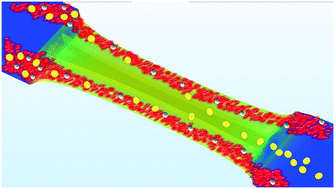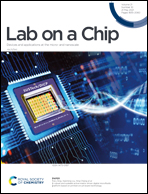Size-tuneable isolation of cancer cells using stretchable inertial microfluidics
Abstract
Inertial microfluidics is a simple, low cost, efficient size-based separation technique which is being widely investigated for rare-cell isolation and detection. Due to the fixed geometrical dimensions of the current rigid inertial microfluidic systems, most of them are only capable of isolating and separating cells with certain types and sizes. Herein, we report the design, fabrication, and validation of a stretchable inertial microfluidic device with a tuneable separation threshold that can be used for heterogenous mixtures of particles and cells. Stretchability allows for the fine-tuning of the critical sorting size, resulting in a high separation resolution that makes the separation of cells with small size differences possible. We validated the tunability of the separation threshold by stretching the length of a microchannel to separate the particle sizes of interest. We also evaluated the focusing efficiency, flow behaviour, and the positions of cancer cells and white blood cells (WBCs) in an elongated channel, separately. In addition, the performance of the device was verified by isolating cancer cells from WBCs which revealed a high recovery rate and purity. The stretchable chip showed promising results in the separation of cells with comparable sizes. Further validation of the chip using whole blood spiked with cancer cells delivered a 98.6% recovery rate with 90% purity. Elongating a stretchable microfluidic chip enables onsite modification of the dimensions of a microchannel leading to a precise tunability of the separation threshold as well as a high separation resolution.



 Please wait while we load your content...
Please wait while we load your content...